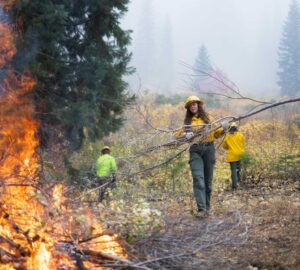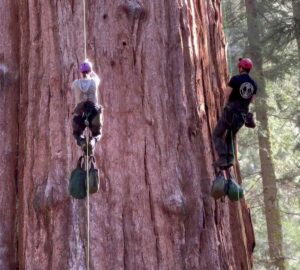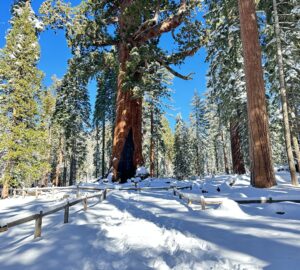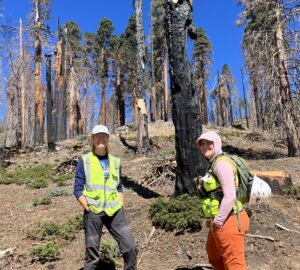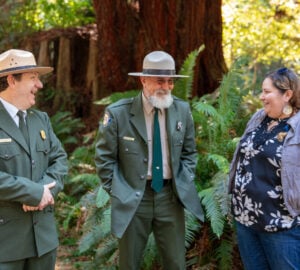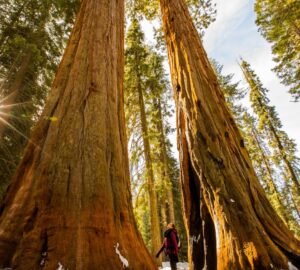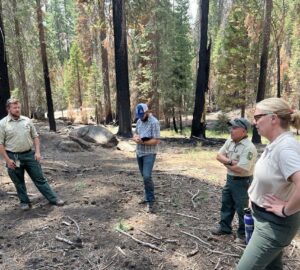RCCI researcher Wendy Baxter describes below why we are tracking weather in the woods:
Monitoring the local weather and long-term climate is an integral part of the Redwoods and Climate Change Initiative (RCCI). Beginning in 2011, scientists from UC Berkeley installed weather stations across the range of coast redwood and giant sequoia forests in six of the 13 RCCI study sites. Monitoring environmental conditions over time at these study sites will enable scientists to understand (1) what weather events are impacting the trees at each site, (2) how climate is changing in these iconic forests, and (3) may help identify sites that are changing most dramatically.
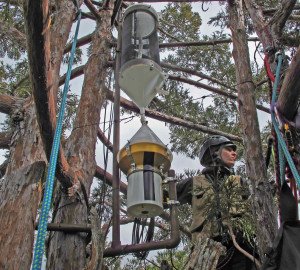
At each site, a weather station was installed at the top of a sentinel (emergent) tree and on the forest floor. The purpose of having a treetop and a ground-level station is to be able characterize the conditions that both fully-grown trees are experiencing and the next generation of giants (seedlings and saplings) as well as other plants and animals who inhabit the forest floor are experiencing.
The weather data collected so far indicates that in the coast redwood forests, temperatures and precipitation follow a predicable latitudinal gradient, with the forests in the north being on average cooler and receiving more rain than those in the south. The temperatures at the giant sequoia sites are strongly influenced by the elevation of the site, more than the latitude. Giant Forest is at the highest elevation and is on average the coldest site while the most northern site, South Calaveras Grove, is at the lowest elevation and is the warmest. Precipitation in the giant sequoia forests generally follows a latitudinal gradient as seen in the coast redwood region. However, for 2014 so far, the most southern giant sequoia grove, Freeman Creek, has received more rain than Giant Forest.
Although the average, year-round conditions follow those general latitudinal and elevational gradients, the season to season (interannual) dynamics are a bit more complicated. For instance, at Montgomery Woods State Natural Reserve in north-central California, the average summer temperature is much higher than at the most southern site at the Landels-Hill Big Creek Reserve. This is because Montgomery Woods is farther from the coast, nested within an easterly facing steep valley, and is not cooled by summer coastal fog.
Learn more about RCCI research here.

